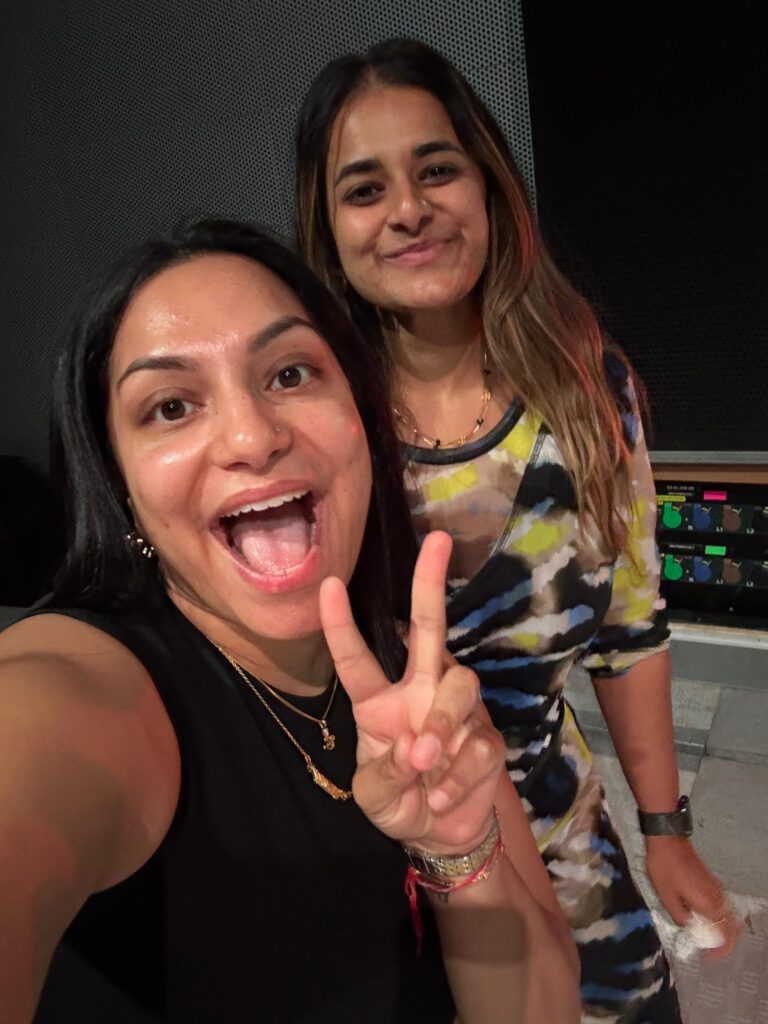Gitika Buttoo (Director) and afshan d’souza-lodhi (Writer/Storyteller) were commissioned by Factory International as part of their Artist Takeover for the North Warehouse at Aviva Studios
“As South Asian creatives based in Greater Manchester, we bring a collaborative approach that draws from our diverse backgrounds in theatre, film, radio, and poetry. Over the years, we have consistently produced work on mid-scale platforms across theatre, film, radio, and poetry, earning recognition for our dedication to telling diverse, impactful stories. However, as South Asian artists, we have often felt constrained by the lack of opportunities to experiment on a larger scale.
For us, stepping into this vast space is more than just a career milestone, it’s a chance to redefine what is possible for artists like us. It provides the platform to test bold, cross-disciplinary ideas and to craft work that is ‘good enough to try and safe enough to fail.’
This is us taking the leap from mid-scale to large-scale, to experiment with ideas we’ve been nurturing, and to create work that is as ambitious as the space itself.
This takeover is not just about audiences observing a story but about them being a part of it.“
Dramaturg: Richard Gregory
Stage Manager: Phil Clack
Set/Visual Designer: Hannah Sibai
Lighting and Tech: Phil Buckley
Deep Democracy Facilitators: Liz Mytton, Paul Connery
Burqa Biker Babe: Lubna Saleh
Colonial Colonel in a Cage: Elliot Hughes
Host: Tom Bass
Photographer: Lee Baxter.
Team at Factory: KeeHong Low, Holly Aston, Pete Vance, Simaran Patel.
Below is a blog written by afshan about the experience:
South Asian Takeover: good enough to try, safe enough to fail.
I’m a writer. Which usually means I spend my days playing with sentences and my nights wondering if the sentences are playing with me. I’ve written for traditional theatre, roamed the streets with promenade performances and even popped up in unexpected corners with work that surprises. But this takeover at Factory International? It was a whole new species of creative chaos. And I loved it.
Factory gave me something I don’t often get in institutions. Freedom. Not just the ‘do-what-you-like-but-within-these-guidelines’ kind. The proper freedom. The scary, liberating kind where I didn’t have to come armed with a polished script or neat little characters. Just an idea. A seed. A provocation. And an airfryer. (Yes. We asked for one. The next day, it was there. Magic.)
We were held so well by the team. If we wanted to experiment, they made it happen. There was no sense of ‘stay in your lane.’ I got to take off the writer hat and wear about a dozen others. Creator. Meddler. Observer. Facilitator. Trouble-starter. Artist. The Factory staff flexed with us every step of the way.
We had the brilliant Richard Gregory as our mentor and dramaturg, who gently nudged us to let go of the need to make something ‘complete’. He reminded us that incompleteness is sometimes where the real stuff lives. The messy, unexpected bits. The kind that makes you question yourself.
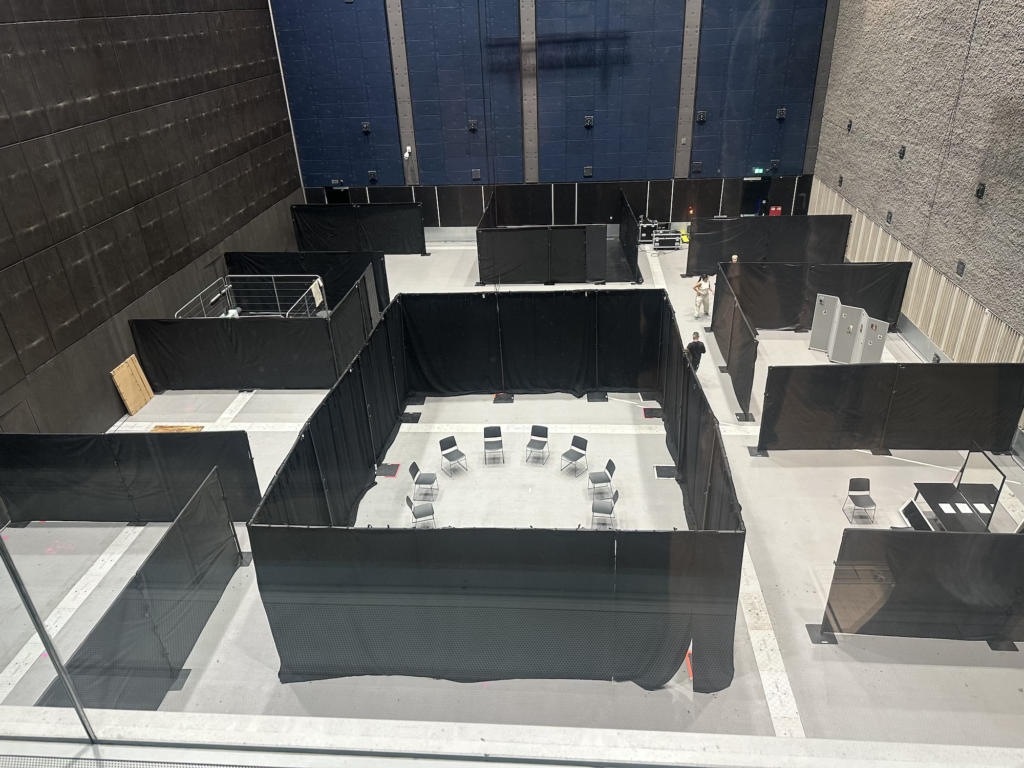
Before We Even Began
This takeover idea had been brewing for months. What started as a piece interrogating privilege turned into something far wilder. Gitika and I, after a few deliciously difficult conversations with Richard and Kee Hong Low, tore the original plan to shreds and salvaged only the juicy parts. Naming privilege felt too easy. What you do with it, now that’s the interesting part.
We were fascinated by how people behave in groups when thrown into game dynamics. What gets revealed? What gets hidden? Who leads? Who follows? Who freezes? We wanted to build a social experiment meets performance that not only poked at those behaviours but gave people space to sit with their why. Why did I act like that? Why did I stay quiet? Why did that moment shake me or provoke me? What does this all say about me and how I show up in different spaces?
To hold all of that safely, we brought in a slimmed-down version of the Deep Democracy process. We worked with Paul Connery and Liz Mytton, two incredible facilitators with experience in trauma-informed practices, anti-oppression work, and a little bit of shamanic practice for good measure. We wanted to provoke but not harm. Push but also hold.
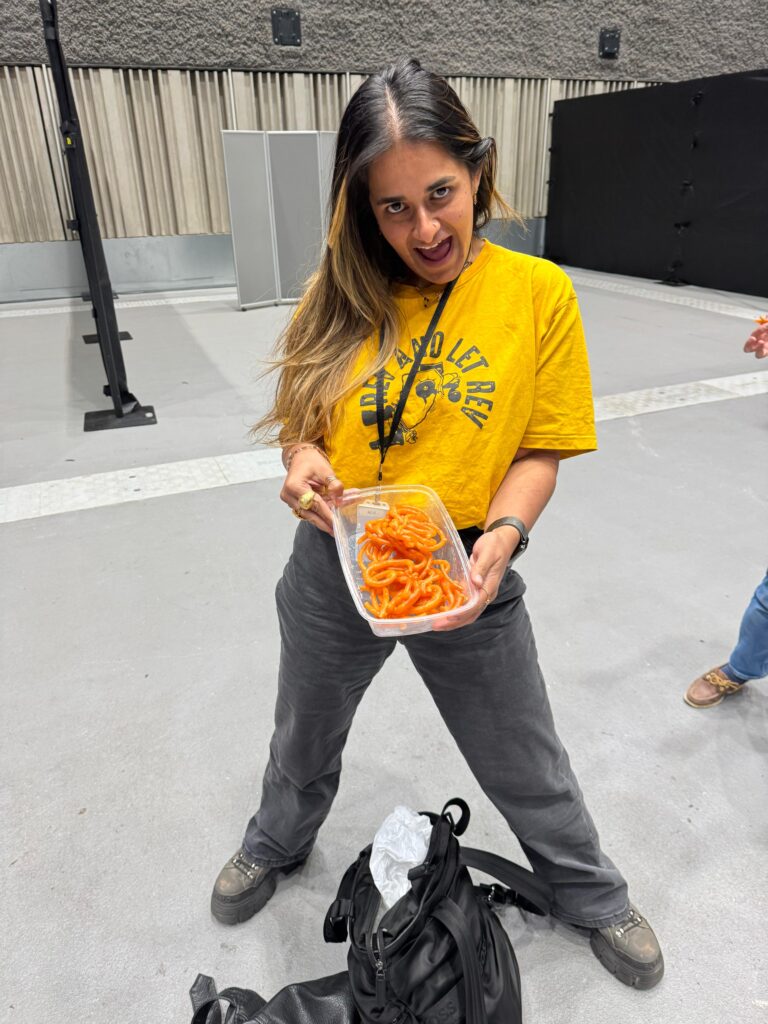
Day One: An Empty Box
The North Warehouse is vast. Big enough to lose yourself in and dramatic enough to dream in. On the first day we entered the space, it was just us and a roll of tape. We marked out the stations on the floor. Then the lights came in. Then barriers. By the end of the day, each station stood like a little island, lit just right to invite curiosity or dread.
Phil Buckley, our lighting designer and production manager, helped us carve out these emotional zones. That night, I watched Hamlet in the next-door space. Suit jackets fell from the ceiling and it reminded me that the only real limit was our imagination. That night I dreamt of possibilities.
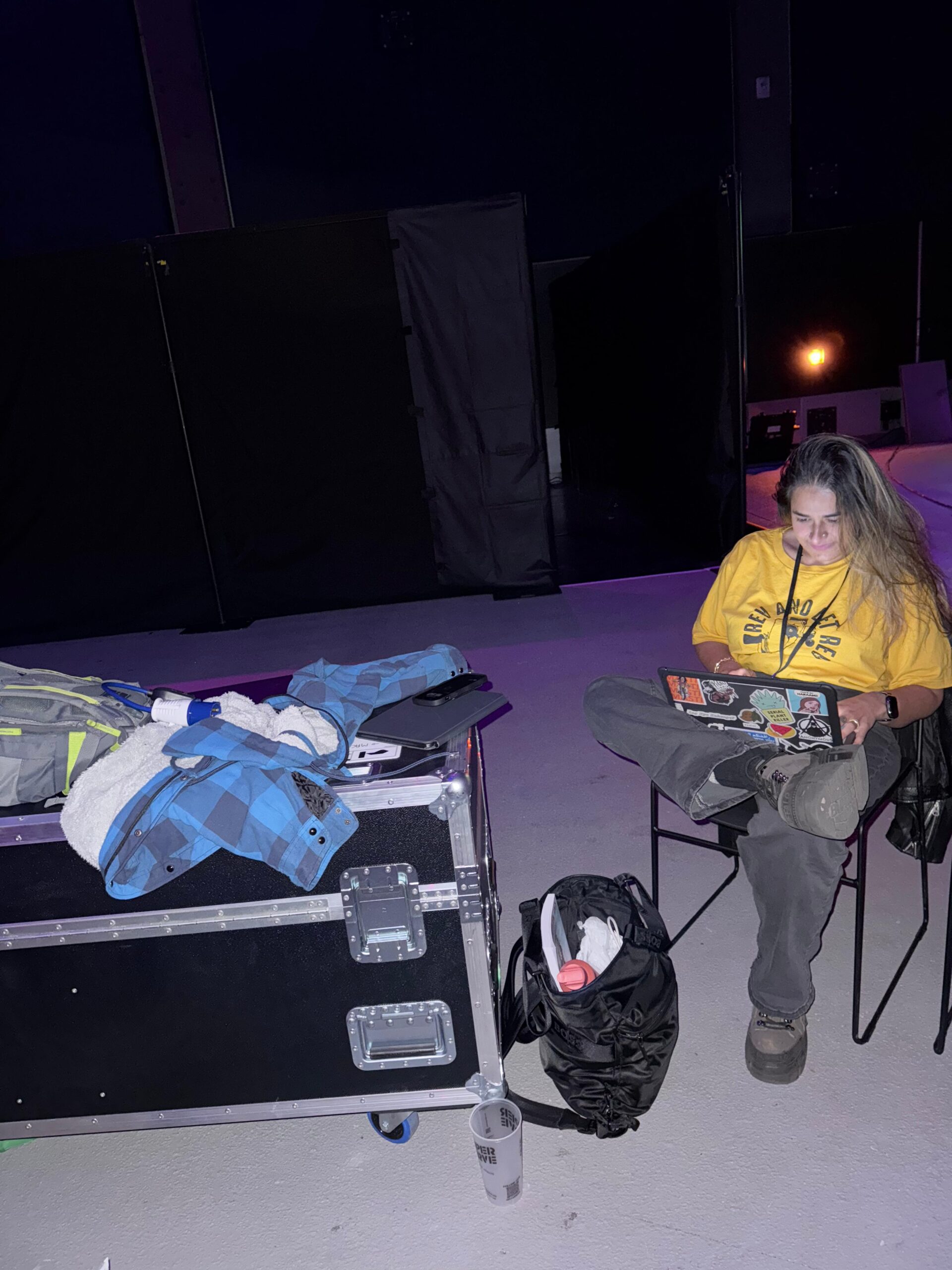
Day Two: The Setup
This was our first real day in the space. We had ten stations to build, and with the help of set designer Hannah Sibai and stage manager Phil Clack, we dressed them like characters. Each with its own mood. Its own agenda. We knew participants (let’s be honest, guinea pigs) would be arriving the next day, so everything needed to be just right.
I finally wrote a script for our host, Tom Bass, who’d be guiding participants through the maze. Gitika and I walked the space like protective parents, rehearsing every beat. The place that had felt intimidating the day before now felt like home. Our weird little warehouse living room. We left buzzing with energy and excitement to share a version of this with others.
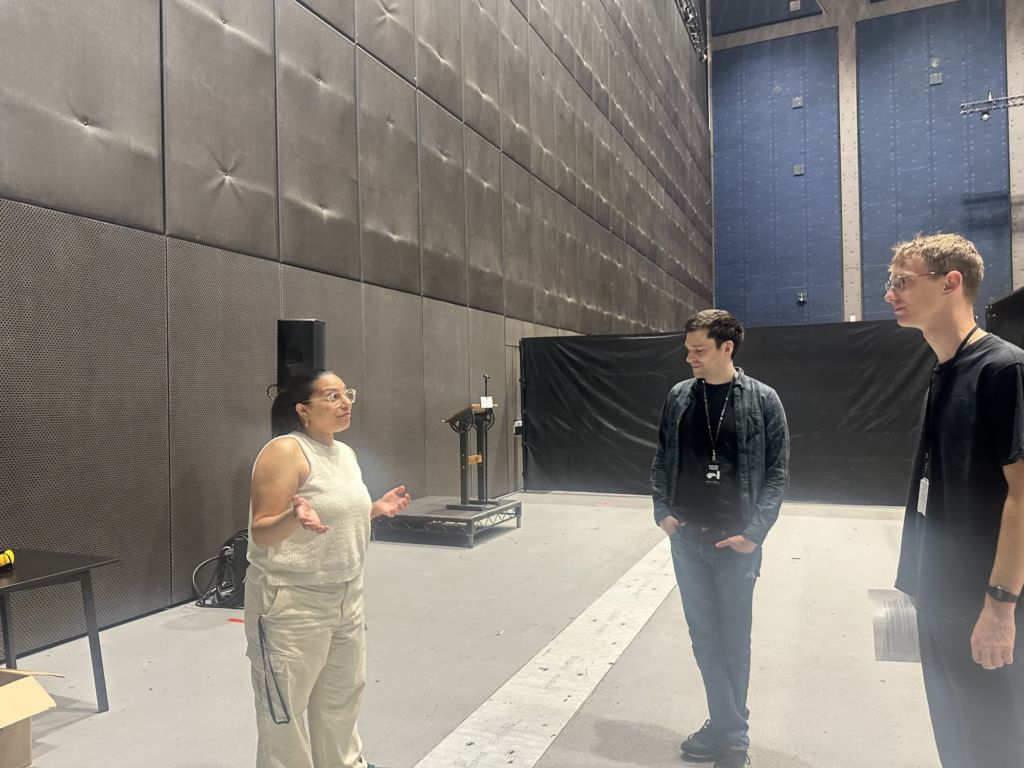
Day Three: The First Sharings
There is no other way to describe how I felt in the morning apart from panic. I arrived at 8am with nervous energy. Thinking maybe I’d forgotten something. For some reason I got the start time of our first sharing wrong and thought we’d have half an hour to brief actors, the host, the facilitators all of whom would be stepping into the warehouse for the first time. Turns out we had two hours. Thank the theatre gods (and Factory staff’s impeccably scheduling). Costumes were fitted, actors Lubna Saleh and Elliot Hughes tackled their (somewhat weird) briefs with grace, and we opened our doors.
The first groups were made up of Factory staff, so the energy was soft, generous. In most traditional performances, you can sit in the audience and watch the show without drawing attention to yourself. This was not the case. As we were running around taking notes, we felt like spies on a mission and were very aware of how our presence would feel to the participants. You can’t lurk in the shadows without casting one.
I facilitated the first Deep Democracy session with Paul. It was tough. I didn’t want to lead the conversation too much but also wanted it to mean something. It’s hard to let go. To trust the process. To accept that what doesn’t come up maybe isn’t ready to yet.
After that first go, we had a big debrief. Most of the conversations had centred around accessibility and sensory deprivation. Important things, but not the core of what we were trying to explore. So for the next group, we scrapped all sensory deprivation elements.
That second experiment felt off. Something was missing. But weirdly, it gave us something else. A space to see how group dynamics worked when the tasks were simpler. We talked ethics. Boundaries. How to hold people without leading them. We reminded ourselves that the goal isn’t to engineer the perfect conversation. It’s to make space for real ones.
After both sharings we had another big conversation. What is it we want from this experience? What do we want people to leave with? What is the story we are telling? Weirdly in most traditional theatre spaces these are the questions I would ask first while writing a script. We decided we would need to shake the whole thing up. Thankfully we had a whole day to figure out what that was and then we would have more sharings on day 5.
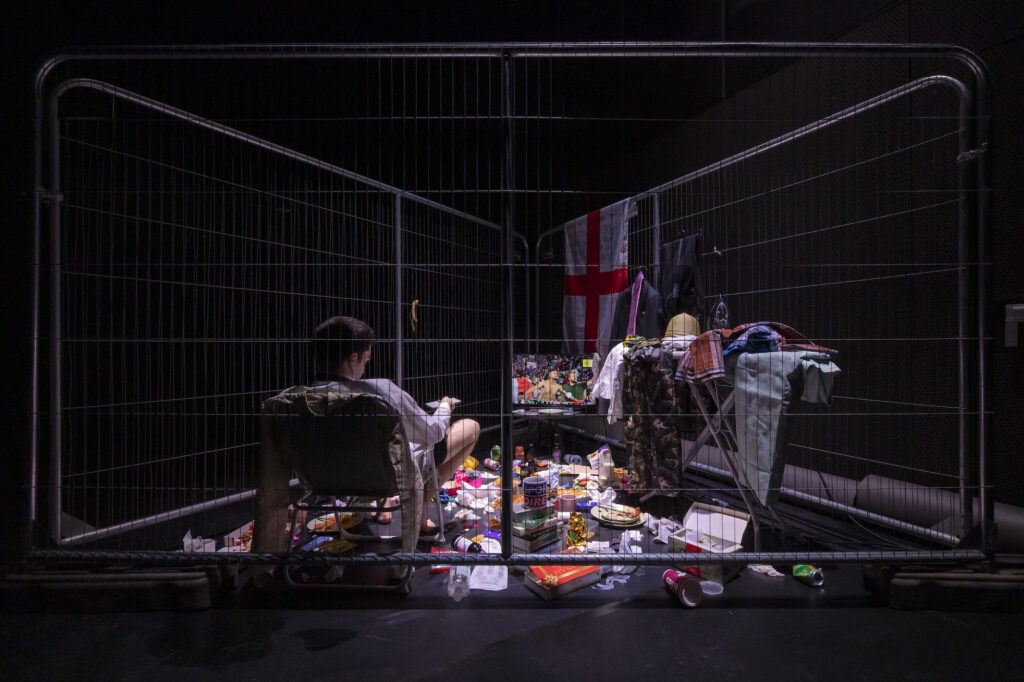
Day Four: My Birthday
For almost a decade now I have spent the day of birthday (and sometimes the week) out of the country. Usually at the beach watching the sunrise at a godforsaken hour and then proceeding to each cake while basking in the sun. This year I was in a warehouse with no natural light. Still got a caterpillar cake though (thanks Pete and Simaran).
We moved the stations again. And again. We integrated, restructured, rewrote. We laughed. A lot. One of the spaces we created, a live art piece called Colonialism in a Cage, brought us pure glee. It was provocative, yes. But also full of layered, weird beauty. And fun. Did I mention this whole takeover was really fun?
We ended the day by checking in with our facilitators about the new journey our audiences would go on and we tweaked the host’s script and got ready for another round of sharings.
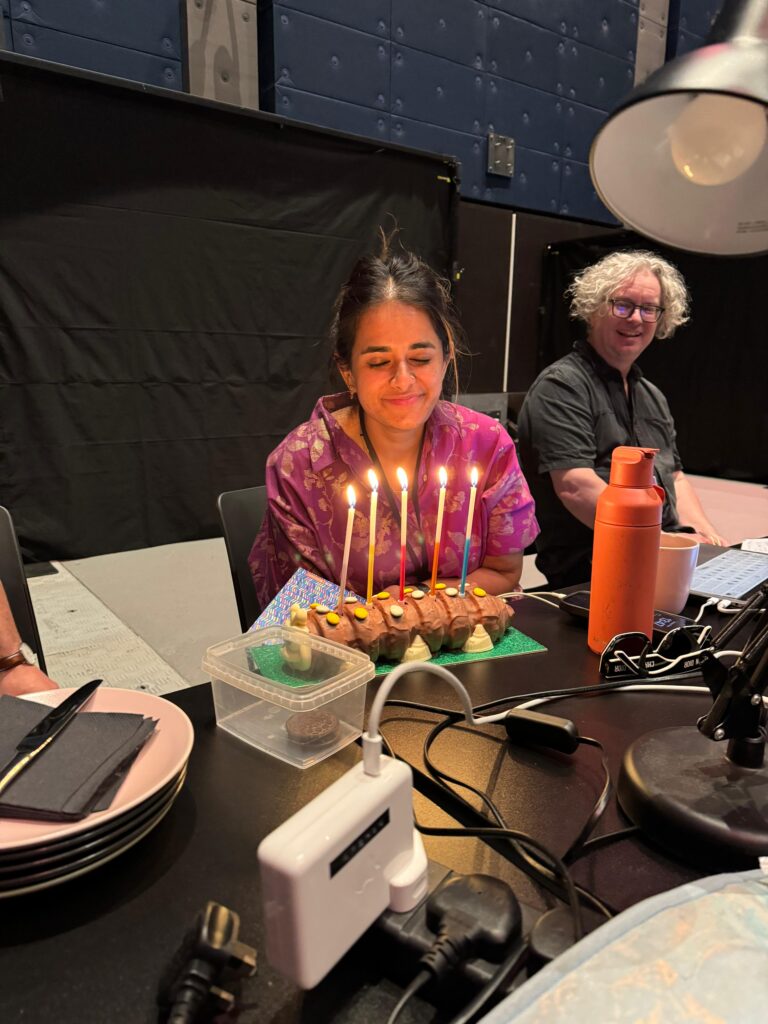
Day Five: The Last Day
I woke up feeling joy. Pure, uncomplicated joy. We had three more sharings and this time, we let ourselves play.
Following provocations from Kee Hong and Richard, we went into each sharing with the idea that we could really test and change different elements. For two of the sharings we even cut one station completely (which had an interesting effect on the participants, who were walking past a station they didn’t interact with).
With each sharing we changed something. This was our opportunity to really test what we were doing. In between each reset we had a quick debrief about what worked well and what we could change, and we just went with it.
These sharings were the closest to the experience we wanted audiences to have. The groups were mostly strangers, things went wrong, people were challenged. On one occasion someone left the space midway through. But all of it came together in those deep democracy spaces. It gave people a moment to really reflect on who they are, how they show up and the impact they have on other people. It allowed people to really ask themselves what it takes to build community. It was everything we’d hoped for and more.
We ended the day exhausted.
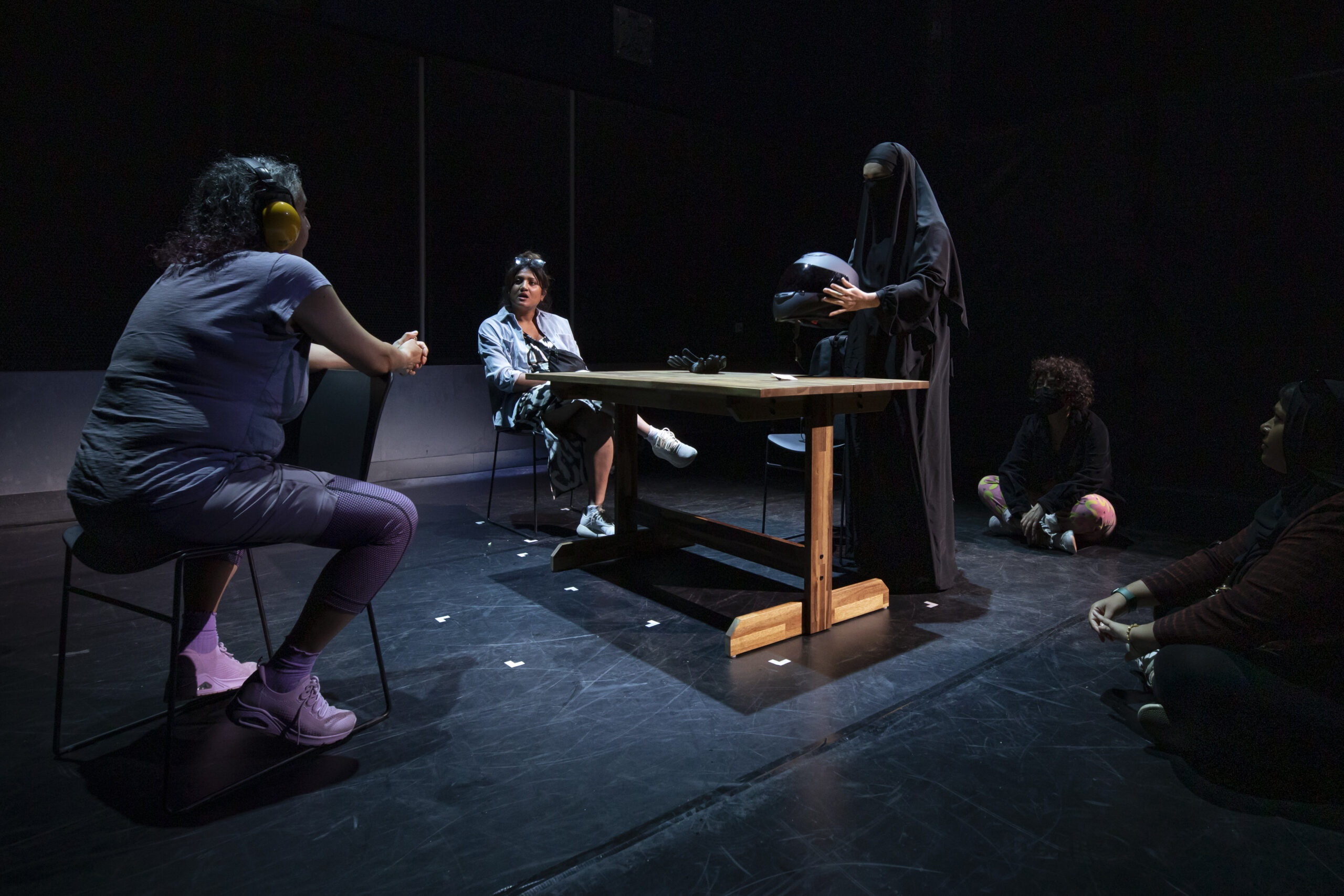
Over the following days we received the photos taken by Lee Baxter (I’ve inserted some in this post) and we were able to relive the sharings.
One of my favourite stations and weirdly the most challenging (and not for the reasons you might imagine) was where participants had to bring in a table they’d made, only to be greeted by a biker in full leather gear. She sat down. Took off her helmet. Then removed her leathers to reveal a burkha. And then ate a burger. That was it. People were thrown. What does it mean? Why aren’t we doing anything? Are we supposed to do something? Is this supposed to be provocative? Is the implication that we would find this surprising or cool or that we would be racist? It provoked people into asking us why. People debated with how long they should have spent in that station.
In fact both live art pieces (this one and Colonialism in a Cage) asked people to sit with discomfort. To observe without being spoon-fed. We’re so used to interacting with art, completing tasks, chasing goals. What happens when the task is just to be?
This takeover gave me something rare. Trust. Time. Space. Creative collaborators who came in ready to play. A chance to really step into my power as an artist. Not just a writer. But an agitator. A question-asker. Someone who wants to unpick the small and massive ways we show up in the world. And maybe even shift them.
